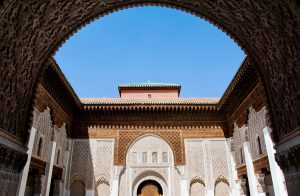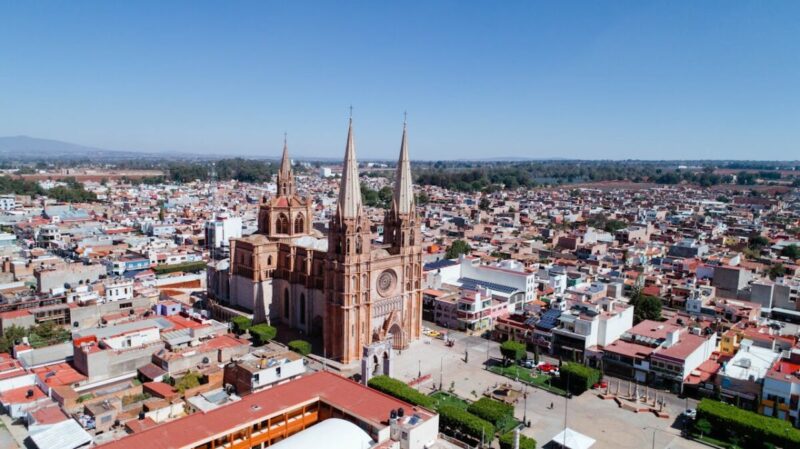Saint Gregory of Nazianzus 4th Century an Early Christian Theologian
Saint Gregory of Nazianzus was born in 329 and died on January 25, 390. He was so important to early theology that he was also known as Gregory the Theologian. Saint Gregory of Nazianzus served as Archbishop of Constantinople from 380 to 381. He was a classically trained orator and philosopher who infused Hellenism into the early Church, establishing the paradigm of Byzantine theologians and church officials. He was very important to early Catholic thought. Much of Saint Gregory of Nazianzus’s theological work continues to influence modern theologians, especially regarding the relationship among the three Persons of the Trinity. Have you heard of him?
Saint Gregory of Nazianzus Biography

Saint Gregory of Nazianzus was born to Greek parents in southwest Cappadocia. His parents were wealthy landowners. In 325, his mother converted his father to Christianity. His father was ordained as bishop of Nazianzus in 328 or 329. In the early church, priests were allowed to marry. Gregory and his brother, Caesarius of Nazianzus, first studied at home with their uncle Amphylokhios. Gregory went on to study advanced rhetoric and philosophy in Nazianzus, Caesarea, Alexandria, and Athens.
On the way to Athens, Saint Gregory of Nazianzus was in a violent storm, and he prayed to Christ that if He would deliver him, he would dedicate his life to His service. While studying in Athens, he developed a close friendship with his fellow student Basil of Caesarea. He was also friends with Flavius Claudius Julianus, who would later become the Roman emperor known as Julian.
In 361, Saint Gregory of Nazianzus returned to Nazianzus and was ordained a presbyter by his father. His father wanted him to assist with caring for local Christians. He had been considering a monastic existence. By this time, Emperor Julian declared himself in opposition to Christianity. In response to the emperor’s rejection of the Christian faith, Gregory composed his Invectives Against Julian between 362 and 363, where he asserted that Christianity would overcome imperfect rulers such as Julian through love and patience.
The next year, Julian, who had vowed to prosecute Gregory, died on a campaign against the Persians. Saint Gregory of Nazianzus spent the next few years combating Arianism, which threatened to divide the region of Cappadocia. In this tense environment, Gregory interceded on behalf of his friend Basil with Bishop Eusebius (Mazaca). Gregory and Basil prevailed in a long public debate. Basil was elected bishop of the see of Caesarea in Cappadocia in 370.
Saint Gregory of Nazianzus was ordained Bishop of Sasima by Basil in 372. By late 372, Gregory returned to Nazianzus to assist his elderly and unhealthy father with the administration of his diocese. It was around this time that his sister, Saint Gorgonia, died, and he preached a eulogy at her funeral. Following the deaths of his mother and father in 374, Gregory continued to administer the Diocese of Nazianzus but refused to be named bishop. He donated most of his inheritance to the needy and lived an austere existence. At the end of 375, he withdrew to a monastery at Seleukia, living there for three years. Near the end of this period, his friend Basil died.
In 383, he decided he was too ill to carry out his duties and resigned his post. Saint Gregory of Nazianzus on January 25, 390. For his great contributions, he was named a Doctor of the Church. His most significant works were on the origin and meaning of the Trinity. In fact, he defined what we currently believe.
Saint Gregory of Nazianzus Veneration

Saint Gregory of Nazianzus was considered the patron saint of the Kotromanić dynasty and medieval Bosnia during the first half of the 15th century, while Saint George, the miracle-worker, has been the patron saint since at least the mid-13th century. He is also one of only three men in the Orthodox Church who have been officially designated “Theologian” by epithet, the other two being John the Apostle and Symeon the New Theologian.
Saint Gregory of Nazianzus was buried at Nazianzus. His relics, consisting of portions of his body and clothing, were transferred to Constantinople in 950. Part of the relics were taken from Constantinople by Crusaders during the Fourth Crusade in 1204, and ended up in Rome. On November 27, 2004, those relics, along with those of John Chrysostom, were brought back to Istanbul by Pope John Paul II.
Conclusion
Saint Gregory of Nazianzus’s life was defined by stark choices: Should he pursue studies as a rhetor or philosopher? Would a monastic life be more appropriate than public ministry? Was it better to blaze his own path or follow the course mapped for him by his father and Basil? Among his most noteworthy publications was one on defining the blessed Trinity.







